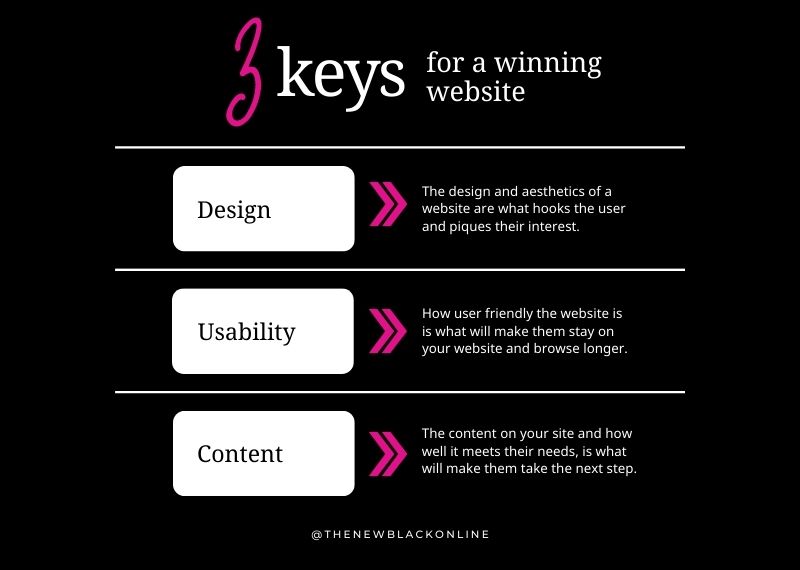
The home page is usually the first page a user lands on when they come to a website and is often the place where users return to when they want to get a general idea of what your business offers. So, it is important that the home page is designed carefully with the user and your end goals in mind.
You have a matter of seconds to capture your visitor’s attention, so if they can’t find what they want in that time frame, or your site does not make a good first impression, you risk losing them.
The following are the key things the home page should accommodate:
- Site identity and mission: What the site is, what it is for, and why the visitor should use it. Your logo, tagline and hero statement are crucial for this. These tell your potential customer exactly what you offer so that they know they’re in the right place, will carry on browsing, and ultimately perform your desired action.
- Site hierarchy: Give an overview of what the site has to offer, both content and how it’s organised. This means website users can quickly scan the page and understand where they are, and how to access the information they are looking for. The main navigation is key for this.
- Search: Have a prominently displayed search box. This caters for those users that are search centric, or for when people can’t find what they’re looking for. Offering multiple ways to navigate a website is important to capture all visitor’s browsing habits. TIP! Review users search terms on occasion and use this information to improve your content and/or navigation.
- Shortcuts and key pathways: Shortcuts to the most frequently requested pieces of content, or to the main pathways you want your visitors to take. This takes the guess work out and directs them straight to where they need to go.
- Teasers: Entice the user with hints of “good stuff”! This will keep them interested and want to stay. Think great imagery, blog posts, specials.
- Timely content: Ideally the home page should contain content which is updated frequently, to give the website signs of life.
- Registration: If the site has a registration or sign up, have a link to this from the home page.
The home page (and other key landing pages) also need to fulfil some other objectives.
- Show the users what they are looking for – make it obvious how they can get what they want.
- Show them what they are not looking for – expose them to other great things your site has to offer and that they might be interested in.
- Establish credibility and trust – this may be the only chance you get to create a good first impression. Reviews and testimonials are a great way to do this, as well as having a secure website and professional feel. TIP! Make asking for reviews part of your users purchasing process. Put links to submit reviews into order confirmed emails or set up email templates to send to clients if you’re a service-based business.
While these tips are all certainly important for your home page, the reality is that the home page is often only the first point of entry to your website 30-50% of the time. So, it’s also vital to think about many of these factors on ALL your website pages (in particular, what website they are on, what you do, where they are, and how the website is organised), so visitors get a good first impression no matter which page they enter the website on.
(Sources – Nielsen & Loranger, Krug, and our own years of experience!)


